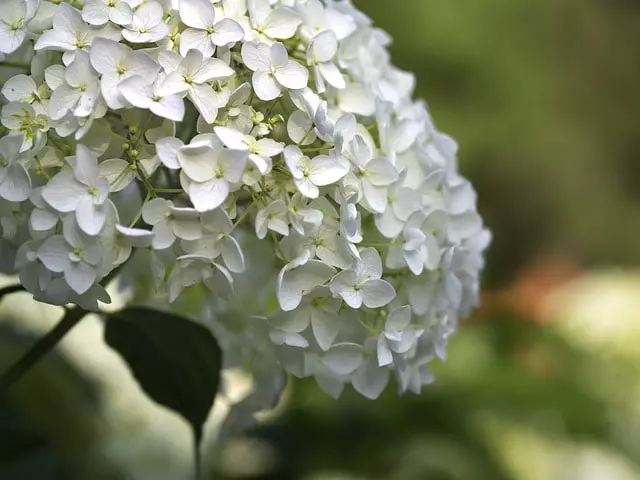How to Prune Hydrangeas is a trick question, Pruning Hydrangeas will keep their flowering every year.
They are one of the most spectacular blooms of good weather. These acidic plants are not at all complicated to grow and, in addition, they give us their flowers continuously during practically all the summer months. However, we must be delicate when it comes to pruning hydrangeas.
Far from being a secondary task, pruning hydrangeas is absolutely vital. Next summer’s bloom will depend on this task. But not only that: this task is also fundamental for the correct development of the plant. For this reason, it should not be done lightly, but rather, knowing how to prune hydrangeas correctly.
It is not only important to know when to prune hydrangeas. It is also important to choose correctly which branches to prune. A guarantee that next summer, the plant will once again be full of flowers.
Thus, one pruning technique may be aimed at improving flowering, and another pruning technique may be aimed at cleaning up the hydrangea bush.
We must also take into account the different varieties of Hydrangeas that can coexist in our garden since the pruning technique of a common Hydrangea (Hydrangea macrophylla) is going to be completely different from the technique of the Hydrangea paniculata.
Table of Contents
How to Prune Hydrangeas Correctly?
When To Prune Hydrangeas?
A recurring question is when to prune hydrangeas. Something that does not have a single answer, but depends largely on the type of plant it is. Therefore, in addition to identifying the branches, it is also important to identify which plant it is. Something simple since it is usual to find two types of hydrangeas: the Hydrangea macrophylla and the Hydrangea paniculata.
Let’s see the two most common ones to know when to prune the hydrangeas we have:
When to Prune Hydrangea macrophylla and How to Prune
How to prune Hydrangea macrophylla. They are the most common, and easily identifiable. They are characterized by very large flowers usually in any variety of pinks, blues, and whites. If this is our case, the idea is that after the summer we eliminate the withered flowers by pruning above the last bud of the branch. Also, at this time prior to autumn, we should ideally remove dead and weak branches.
With the end of winter and as long as there is no frost, it is time to prune these hydrangeas properly. It is important to clear the central part of the plant, eliminating the oldest branches. For this task, the idea is to cut at ground level.
When it comes to pruning these hydrangeas, there is something important to consider. If we prune too much, next year we will have fewer but larger flowers. If we are conservative with pruning, there will be many flowers but smaller flowers.
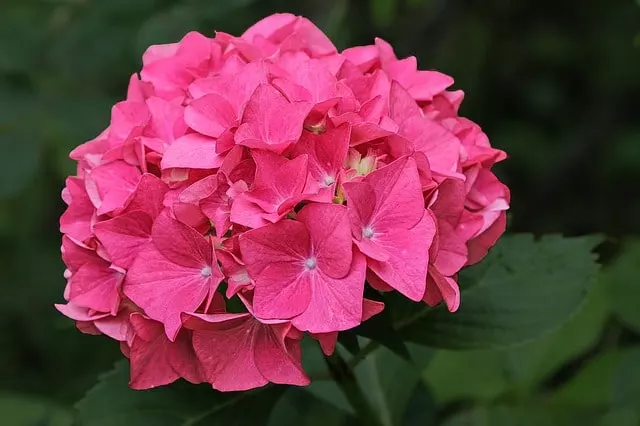
When to Prune Hydrangea paniculata and How to prune Hydrangea paniculata
Hydrangea paniculata is a very unique hydrangea. Instead of the classic round flower clusters, in this case, the shape is conical. In addition to removing faded flowers and weak branches, from the end of summer we can consider pruning. It is only important to keep one thing in mind: if we live in a cold climate, it is best to wait until the end of winter. In this way, the plant will not be compromised by the cold.
When it comes to pruning hydrangeas of this type, the idea is to prune close to the buds of the new stems. It also doesn’t hurt to clear the central branch of the hydrangea to give it lighter.
How to Prune Hydrangeas
As with other plants, pruning hydrangeas is a way to clean up the plant. Like other plants, hydrangeas tend to have a tendency to have a lot of branches. That is why it is important to remove some of it. Make no mistake: this does not imply shearing the plant. In fact, it is basically to allow the plant to concentrate its nutrients on growing and flowering properly.
Unlike other plants, in the case of hydrangea, it is vital. We are talking about a plant with very high water demand. If the plant has too many branches that are not suitable for flowering, it will be investing too many resources in branches that will never bloom. This is a good reason why, both for sustainability and for the good future of the plant, we should prune the hydrangea correctly.
We insist that it has to be done correctly because it is not a pruning to be done lightly. Before putting shears, it is essential that we know in depth the characteristics of its branches. Or, rather, the types of branches that the hydrangea has. Some of them are marked above all by their age, and on which even the shape of the plant depends.
Something we can’t leave out either since the hydrangea is an ornamental plant.
To prune Hydrangeas correctly we have to ask ourselves what we want to get from our Hydrangea plants next year, and what Hydrangea really needs us to do for its health and optimal vegetative development.
A poorly done pruning can harm the flowering of Hydrangeas, whereas if done correctly, it will not only improve the number of flowers in the next blossom, but will also increase the individual quality of each Hydrangea flower on our plant.
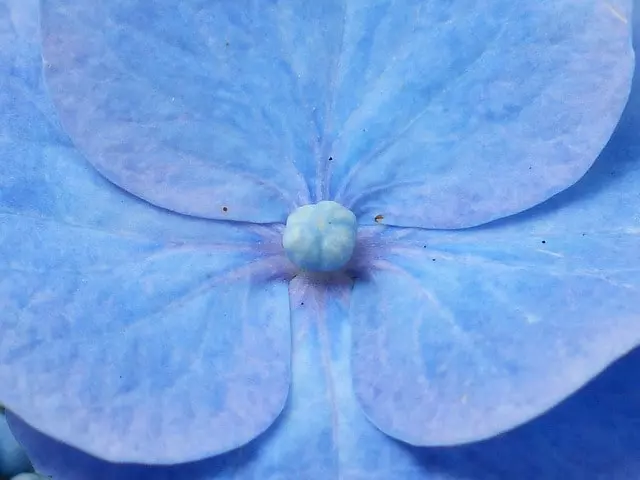
How to Prune Hydrangeas for re-blooming?
The technique of pruning to improve the flowering of Hydrangea is very important to achieve abundant flowering of our plants for the next year.
But we must not neglect the basic work tasks that our plants demand from us, because if your Hydrangeas do not bloom, it can also be the result of bad use of the fertilizers that you use in your garden. How to fertilize Hydrangeas? explains the correct way to fertilize your Hydrangea.
Pruning shears for moderate jobs. A pruning shear for moderate work can make the task of pruning Hydrangeas a little easier for you by reducing the muscular effort you have to make with your hands.
Pruning Hydrangeas requires comfortable tools that allow us to concentrate on selecting the branches to do our job of maintaining the shrub well.
Pruning Techniques for Common Hydrangeas (Hydrangea macrophylla)
Hydrangea pruning techniques begin once we know what we want and what our Hydrangea needs. So it is mandatory to ask ourselves a series of questions in order to start the pruning process.
What Is the Natural Shape Of A Hydrangea?
The second question to ask is if we know the natural shape of the Hydrangea since pruning should not be oriented to modify this natural shape, but to respect it.
The natural shape of Hydrangeas is a rounded bush. It is a beautiful and elegant shape, and there is no need to try to improve it, so pruning should be aimed at removing branches that alter the shape by being extremely long or untidy.
On Which Branches Do Hydrangeas Bloom?
The third question, and not for that reason the least important, since we must know which branches of the Hydrangea are going to bloom next year, in order to respect them at the time of pruning.
Hydrangeas bloom from the apical buds that form at the end of summer and in autumn.
What Are the Apical Buds of Hydrangeas?
The shoot of any plant is a stem with leaves.
The tip of a stem ends in an apical bud. This is the place from which new leaves and branches will grow.
The growth activity of the apical bud is greater, and it increases the length of the stem, producing more leaves as the stem extends.
The lateral bud is located where each leaf joins the stem.
If we have a shoot with twelve leaves, we will have one apical shoot and twelve side shoots.
When Is the Best Time to Prune Hydrangeas?
The common or large-flowered Hydrangea (Hydrangea macrophylla) is pruned at two times of the year: Fall or Winter.
If we take all of the above into account, we will see that the best time to prune Hydrangeas is after flowering. When the flowers of the plants begin to wilt.
Know the branches to prune hydrangeas correctly. Knowing these details, it is time to know more about their branches. Let’s differentiate the three types to know how to prune hydrangeas accordingly:
Old branches: these are the oldest and most woody branches. They are usually in the center of the plant and, on many occasions, they even intertwine. This type of branch must be completely eliminated since it only detracts nutrients from the plant. This also detracts energy from other branches that can flower.
Young branches: these are branches that are around three years old. For these branches, the idea is to prune them to 50% of their length. If they still have old flowers, the idea is to cut them above the bud.
Offshoots: Unlike other plants, hydrangea offshoots are positive. They are the youngest branches, with a stem that usually starts from the base of the plant. It is from these branches that the flowers are born, so they should never be pruned. Not only will they bloom, but they also ensure the rejuvenation of the plant.
Slow-Release Universal Fertilizer
Universal fertilizer is the partner of pruning shears in any pruning job within your garden.
It is always a good idea to provide a few grams of universal fertilizer as a way to allow the plant to quickly find nutrients such as Nitrogen to recover from the branch cut wounds and continue its Fall growth stage.
Hydrangea Pruning: Tips and Recommendations
The hydrangea pruning technique is very simple.
First steps of Hydrangea pruning. Once the flowering begins to fade and the growth of the plant gave rise to robust shoots at the base of the plant, we begin the work of pruning by removing all the inflorescences of the plant, which will allow us to have more comfortable access to the stems.
Next, we prune the stems of the plant just above the top two buds.
How do we select the branches to prune from the Hydrangea?
Now we make a selection of the branches:
– We remove the weakest stems and all the aged branches from previous years and that did not bloom. We have to prune them from the base of the Hydrangea.
– We respect the stems that we see well lignified; that is to say, we select the stems and keep those that are rigid and are taking body and woody appearance.
– The branches already formed, and that has a certain age (more or less three years) can be pruned. They are young branches, and can be presented in two ways:
1. We can see two parallel branches that developed together from their lateral bud. Pruning would consist of making a selection eliminating one of the two branches; and cutting the other branch in half.
2. We can see only one branch. Pruning would consist of cutting it in half.
– Offshoots are branches that come out from the base of the Hydrangea and have only one bud at the end of the stem, from which a single flower will come out and they will be the first to bloom. You can leave two or three per plant without any problem, as they help to rejuvenate the plant, but it is recommended to prune the rest and remove them from the base.
The Result of Pruning Hydrangeas
With this work, we maintain a strong and robust base from which the new stems will grow, on which, next year, the Hydrangea will bloom.
Pruning after flowering is beneficial for our Hydrangeas because it is a way of cleaning up the plant and eliminating its weakest parts. Also, because we follow its vegetative rhythm and help it in flowering next year. For this reason, it is not advisable to delay pruning on the way to Winter, as the cold could affect the formation of new shoots.
Hydrangea Care
It is also advisable to follow the scheduled tasks and look at Hydrangea care during the Seasons to prepare the plant as best as possible for the new year.
Neem Oil and Potassium Soap
In the late summer and throughout the Fall, garden insects remain active and may come to feed on new Hydrangea buds in their Fall growth stage.
Neem oil and potassium soap will help you against insect pests and prevent the plant diseases they can cause during their feeding. Learn more about How to Mix Neem Oil for Plants.
Pruning Hydrangeas in Winter
If you decide to prune your Hydrangeas at the end of winter, you run the risk of eliminating branches destined to bloom during the summer.
However, if you want to limit the growth of the Hydrangea or to clean up old Hydrangeas that are more than five years old, this is the perfect time to prune them.
How to Rejuvenate a Hydrangea?
Hydrangeas older than five years may need to be pruned back.
At the end of winter, during the month of February, when temperatures begin to soften, we can prune the Hydrangea to maintain its shape, size, and vigor.
How To Prune Hydrangeas in Winter?
How To Prune Hydrangeas in Winter? Pruning consists of removing a quarter of the oldest and thickest branches of the Hydrangea, cutting them off at ground level.
We could also remove the main trunk, leaving a stump, and keeping all the young branches around it.
Hydrangeas will receive light on all branches and will facilitate the growth of new shoots.
Two-handed pruning shears are one of the tools needed. Hydrangea pruning that is considered a bit more aggressive, such as rejuvenation pruning or renewal of its bushy part, requires two-handed pruning shears that are comfortable to work with.
Aluminum pruning shears are a very good choice because they are lightweight. In addition, they do not require much muscular effort thanks to the bypass cutting system that allows the blade to face branches of 45mm.
These dimensions are designed for pruning fruit trees, so your cuts on shrubs will be very fast and comfortable, making Hydrangea pruning a pleasant task.
Pruning Techniques for Climbing Hydrangeas (Hydrangea anomala)
As we mentioned, the climbing hydrangea is very decorative, so the pruning technique cannot neglect its ornamental aspect.
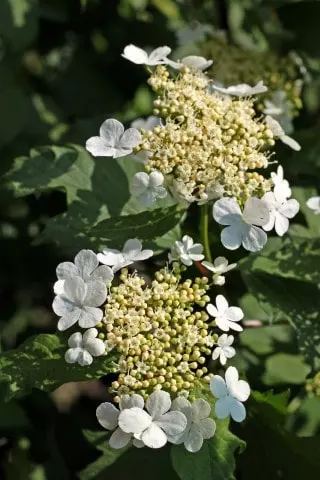
How to Prune the Climbing Hydrangea (Hydrangea anomala)?
Pruning the climbing hydrangea (Hydrangea anomala) consists of removing old, broken or damaged branches.
This variety of Hydrangea hardly needs pruning, but given its natural untidy shape, it is good to use the pruning technique to ensure an aesthetic and a pattern of its vegetative development and its growth in the space we want to assign to it in our garden or on our terrace. Learn more about How to Grow Hydrangea from Cuttings.
Pruning Techniques for Oakleaf Hydrangeas (Hydrangea quercifolia)
One of the characteristics for which I recommend incorporating the oakleaf hydrangea (Hydrangea quercifolia) in our gardens and patios is, in addition to its flowering, the colorful leaves during the fall.
The leaves of this Hydrangea make the same color change as the American red oaks (Quercus rubra) and bring intense red color to our garden of high decorative value.
How To Prune the Oak Leaf Hydrangea (Hydrangea quercifolia)?
The pruning technique of the oakleaf hydrangea (Hydrangea quercifolia) should ensure that in autumn we can enjoy the change of color of its leaves, so it will only clean the faded flowers during this season.
Pruning will be done at the end of Winter or at the beginning of Spring to clean up the dead or damaged branches due to the cold of Winter.
A Garden broom with a wooden handle is a highly recommended tool. Hydrangea pruning during Fall and Winter will always be accompanied by other garden maintenance work that is best done with good tools.
Cleaning the soil of leaves and branches after pruning Hydrangeas is very important to promote aeration and the removal of plant debris that can be used by fungi to hibernate and return to parasitize our plants with a new season.
Remember that to prevent plant diseases, it is good to clean the soil of our garden.
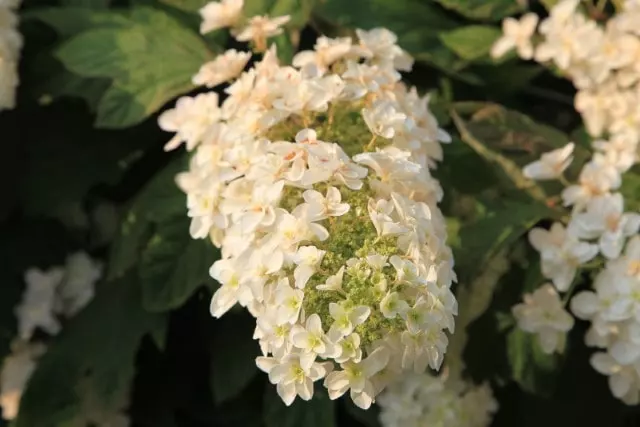
Pruning Techniques for Sun Hydrangea (Hydrangea paniculata)
The Sun Hydrangea (Hydrangea paniculata) has a high ornamental value in our garden because we take advantage of its flowering differently according to the Seasons.
The Hydrangea paniculata blooms in Summer and during the Fall its flowers change color before fading. You can choose not to prune them, letting them persist as dried flowers in your garden, without harming the plant at all, they will only be one more decorative element.
How to Prune the Sun Hydrangea (Hydrangea paniculata)?
The technique of pruning Hydrangea paniculata respects the vegetative development and flowering period of this plant, so pruning is done in late winter or early spring.
The flowering of Hydrangea paniculata occurs on the new shoots of the year, so it has time to grow and develop. Thus, pruning can be done to clean and aerate the plant only; or it can be done to shorten its growth and maintain an even shape.
Garden wheelbarrow. The garden wheelbarrow helps you to transport the bags of compost, clay balls, or pine bark for your maintenance work in your garden.
You can also use it to remove pruning waste and take it to your composting area. Remember to remove the plant debris from those plants that have a parasitic disease, but you can use the rest.
Hydrangea pruning allows you to make good compost to incorporate into the substrate of your dear friends and maintain its acidity in a natural way.
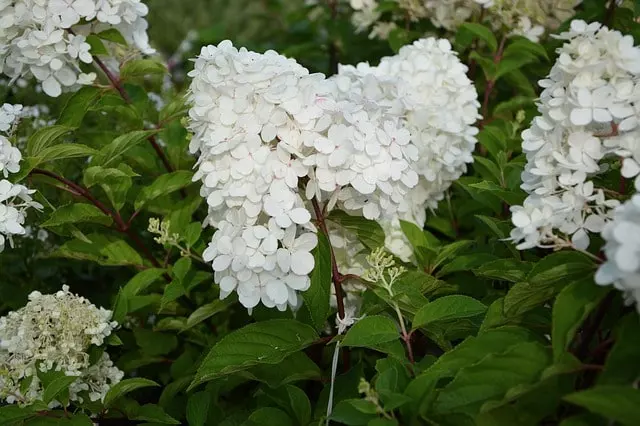
Pruning Techniques for Giant Flowering Hydrangea (Hydrangea arborescens)
Hydrangea arborescens may boast the largest flowers of the entire Hydrangea genus, but it is also the most sensitive to cold, so pruning and Winter care should focus on overcoming winter cold.
How to Prune the Giant-flowered Hydrangea (Hydrangea arborescens)?
Hydrangea arborescens blooms on the new shoots of the year.
Pruning should always be done in winter, and it should be done almost at ground level. We will already have the Hydrangea in its vegetative rest, so it will not generate new shoots, and we will be able to protect the plant with the winter mulch.
For Hydrangeas Lovers, more articles you would be interested Pruning Endless Summer Hydrangeas (Hydrangea macrophylla).
